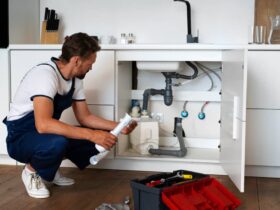Forklift batteries are a significant investment, and proper care can help to extend their lifespan. For example, always ensure that all batteries are fully charged at the end of the day (the chargers should display green lights) and topped up with deionized or distilled water to the correct level.
Using a suitable industrial battery charger is also essential. Lastly, never cut the charge cycle short, which can significantly reduce battery lifespan.
Don’t Overcharge
Forklift batteries have a lifespan measured by charge cycles, and every time you overcharge them, you reduce the battery’s lifespan. You may have gotten into the habit of giving the forklift battery a quick charge during breaks, but you’re shortening its life. For example, opportunity charging allows acid to build up on the positive and negative plates of the forklift battery repair, creating sulfation which can lead to the need for a replacement sooner.
Overcharging is especially damaging to lithium batteries but can also be problematic for forklifts with lead-acid battery systems. This is because it disrupts the battery’s ability to accept a charge and leads to permanent damage.
Avoiding overcharging is easy enough with proper battery care and maintenance, including ensuring your charger matches the battery’s output voltage and Ah rating. You should also make sure that the battery stays cool during the recharging process. Overheated batteries generate hydrogen gas; if allowed to occur in an enclosed area, it can cause a fire or explosion.
Additionally, check the battery’s water level after every five recharges and add distilled water as needed. It would help if you kept a battery watering log, as these can be helpful in the event of a warranty claim. Keeping detailed records can also help extend a forklift battery’s lifespan.
Don’t Undercharge
When forklift batteries are undercharged, the plates within the battery are exposed to air. This causes the active material in the plates to dry out and break down, reducing the battery’s life expectancy. To avoid this, a forklift technician should check the water level in the battery every four or five charges and add distilled water as needed to maintain it. A forklift battery watering system can effectively do this quickly and efficiently, especially for large fleets.
Most forklift batteries can endure about 1,500 charging cycles, but they will degrade faster when undercharging. Workers should only charge a battery when about 20 percent of its energy is left or as the forklift manufacturer directs. This will prevent the battery from becoming unable to accept a charge or suffering from hard sulfation, which can damage the battery and reduce its lifespan.
It is also essential to discharge a battery up to 80% of its capacity. This will also cause lasting damage to the battery and severely shorten its lifespan. To protect against this, crews should ensure the battery is fully charged before beginning work each day. However, they should also be careful not to charge a battery too often, which can lead to excessive heat and cause the battery to short circuit.
Don’t Skip Charges
Every battery has an expected lifespan that the manufacturer outlines. However, improper maintenance and charging practices can dramatically shorten that lifespan. When a battery is not charged correctly or stored, it can become hard-sulfated, reducing its useful lifespan by nearly half.
If you want to extend the life of your forklift batteries, you must charge them each day and not skip charges. If a battery isn’t fully charged when you remove it from the charger, it will continue to discharge. This will add up and significantly reduce the overall battery lifespan.
Instead, always allow the battery to charge until it has reached 100% before removing it from the charger. This ensures that the battery is entirely ready for use the next time it is needed.
You should also avoid fast charging your forklift batteries, as it can cause them to wear out more quickly than conventional charging. If you must, be sure to equalize the battery regularly, following the manufacturer’s guidance.
Finally, investing in a high-quality industrial charger within 10% of the battery’s amp hour rating is essential. If the charger and battery are not matched, it can lead to over- or underwatering. Ensure only to remove the forklift battery caps to water it when necessary, and only do so after a full charge.
Don’t Clean the Battery
Battery life is essential because forklift batteries are heavy-duty and expensive to replace. They can last several years if you follow basic processes for charging and maintenance. It is essential to understand why your batteries fail and what you can do to extend their lifespans.
A lead-acid forklift battery’s primary function depends on dissimilar materials’ negative and positive electrodes (sponge lead and lead dioxide). A separator separates those two electrodes to prevent one electrode from contacting the other during discharge and causing irreversible damage.
The average battery will last 1,500 cycles, or five years, with proper care and charging. Improper storage and charging will dramatically reduce that lifespan.
To get the most out of a battery, it should only be charged once daily and at the end of an eight-hour shift. It should also discharge at most 30% of its energy before recharging. This helps to protect the battery from sulfation and other effects that decrease total lifespan.
When the forklift battery is not in use, it should be topped off with deionized or distilled water to the correct level on a schedule. This prevents the forklift battery from overcharging and exposes its components to air, which can cause unwanted chemical buildup. It is also a good idea to have forklift batteries professionally tested. These tests are a great way to identify problems and signs of failure before they impact your warehouse operations.














